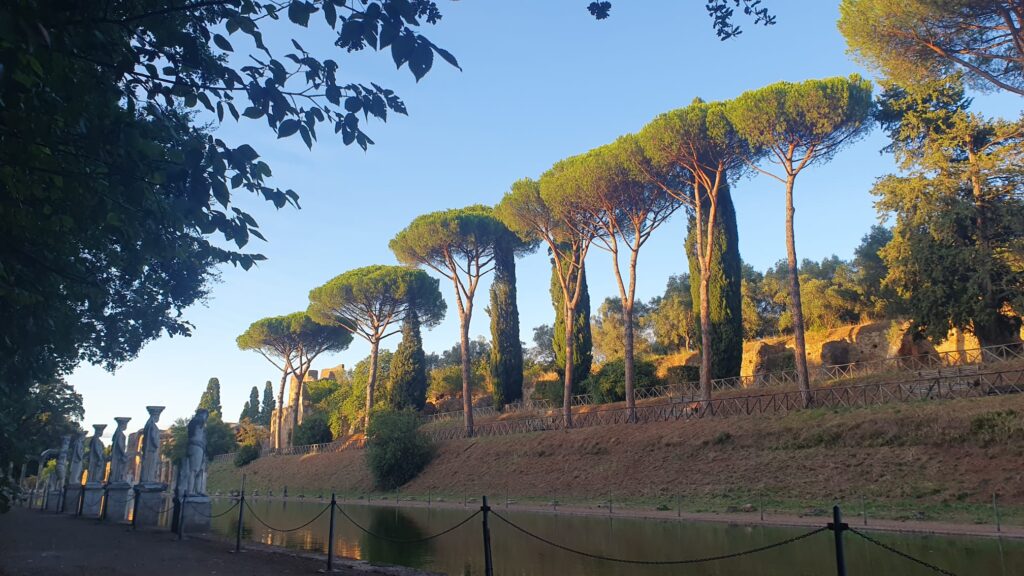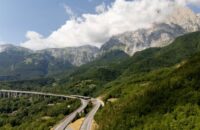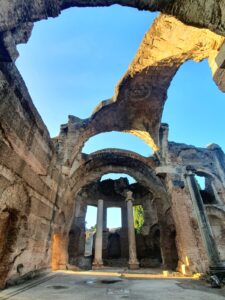 On Saturday, September 28 and Sunday, September 29, European Heritage Days( GEP), Europe’s largest and most widely attended cultural event, returns. Promoted by the Council of Europe and the European Commission since 1984 (at the initiative of France), GEPs take place every year at the end of September and in Italy are coordinated throughout the territory by the Ministry of Culture. During the GEPs, guided tours, extraordinary openings including at night, conferences, and happenings in museums, libraries, and archives are promoted to enhance and make more usable the cultural heritage.
On Saturday, September 28 and Sunday, September 29, European Heritage Days( GEP), Europe’s largest and most widely attended cultural event, returns. Promoted by the Council of Europe and the European Commission since 1984 (at the initiative of France), GEPs take place every year at the end of September and in Italy are coordinated throughout the territory by the Ministry of Culture. During the GEPs, guided tours, extraordinary openings including at night, conferences, and happenings in museums, libraries, and archives are promoted to enhance and make more usable the cultural heritage.
This year’s theme is “Heritage on the Road,” a clear invitation to discover and rediscover paths, communication routes, connections and networks that, today or in the past, have made possible relationships and exchanges among peoples and cultures and contributed to the formation of our identity.
In Rome there is a rich program of extraordinary openings and guided tours to promote both culture and community, but also in locations easily reached from the A24-A25 highways it is possible to find events that promote heritage, as in the case of Tivoli and its Villas: in fact, for the occasion the sites of Villa Adriana and Villa d’Este will welcome visitors with a series of initiatives ranging from extraordinary evening openings to meetings, guided tours, theatrical and musical performances.
In Abruzzo, it is especially the Soprintendenza Archeologia, Belle Arti e Paesaggio (Archaeology, Fine Arts and Landscape Superintendence ) of the four regional provinces that organizes events and guided tours, which will allow people to discover even lesser-known realities.
- TERAMO, THE NECROPOLIS OF PIANO D’ACCIO AND THE DOMUS DEL LEONE
In Teramo, during the course of preventive archaeology activities in the Piano d’Accio locality, burials referable to the Iron Age have been found, which can be placed between the seventh and sixth centuries B.C.; on Saturday, Sept. 28, it will be possible to visit the archaeological site thanks to the synergy between the superintendence, the University and FAI – Fondo per l’Ambiente Italiano.
Also on Saturday 28, thanks to the collaboration between the Superintendence and the property, it will also be possible to visit the Domus del Leone and admire its splendid mosaic dating back to the 1st century BC.
- AVEZZANO, CLAUDIO’S TUNNELS ARCHAEOLOGICAL PARK
On Saturday 28 there will be an extraordinary opening with an evening event in the Archaeological Park of Claudius’ Tunnels: these are the remains of the imposing engineering work, carried out by Emperor Claudius, to reclaim Lake Fucino between 41 and 52 A.D., and they offer an opportunity to understand the grandeur of the intervention and its effects on the surrounding territory, which has always been conditioned by the presence of the third largest lake basin in Italy, which was finally drained in the second half of the 19th century, thus changing the geography of the territory. The route allows the visitor to grasp the development of the system built in Roman times to drain the water from the lake, going up to the mouth of the Liri River.
- SULMONA, THE CITY WITHIN THE CITY
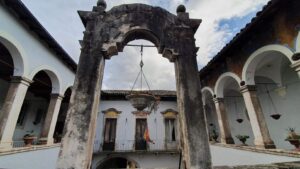 The Roman city of Sulmo still lives in Sulmona’s present: a tour is proposed that touches on some of the places in the historic center in which archaeological remains and artifacts are preserved that recompose a long history: the domus, the Archaeological Museum, mosaics and inscriptions that trace the moments of lived life. There will be an opportunity to be able toparticipate in a guided tour of the historic center to discover the history of the city of Ovid.
The Roman city of Sulmo still lives in Sulmona’s present: a tour is proposed that touches on some of the places in the historic center in which archaeological remains and artifacts are preserved that recompose a long history: the domus, the Archaeological Museum, mosaics and inscriptions that trace the moments of lived life. There will be an opportunity to be able toparticipate in a guided tour of the historic center to discover the history of the city of Ovid.
- L’AQUILA, VISITING ITS CHURCHES AND THE MuNDA.
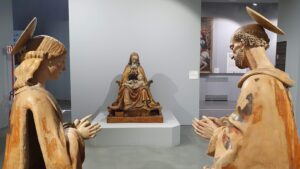 In L’Aquila, it is not difficult to find oneself immersed in history; one only has to walk in the center or visit the surroundings of this large, spread-out city to find an open-air museum, the Amiternum Archaeological Park, discover the Church of Santa Margherita dei Gesuiti, or encounter a 16th-century Castle which will open its eastern bastion to the public for the occasion, and which also houses the Museo Nazionale d’Abruzzo – MuNDA, a museum with a wide selection of artistic works and which preserves inside it the skeleton of a Mammoth, found in 1948 in Scoppito.
In L’Aquila, it is not difficult to find oneself immersed in history; one only has to walk in the center or visit the surroundings of this large, spread-out city to find an open-air museum, the Amiternum Archaeological Park, discover the Church of Santa Margherita dei Gesuiti, or encounter a 16th-century Castle which will open its eastern bastion to the public for the occasion, and which also houses the Museo Nazionale d’Abruzzo – MuNDA, a museum with a wide selection of artistic works and which preserves inside it the skeleton of a Mammoth, found in 1948 in Scoppito.
- CHIETI AND ITS NATIONAL ARCHAEOLOGICAL MUSEUMS
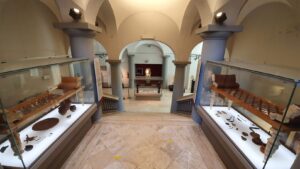 Chieti has as many as two museums that can be visited for the occasion: the MANdA – National Archaeological Museum of Abruzzo, among its collections houses artifacts from the entire regional territory, from the protohistoric age to the early medieval age, the result of excavations, fortuitous discoveries and research conducted in the area (the statue-stele of the Capestrano warrior is exhibited here ) and it is possible to discover finds of exceptional value that testify to the cultural history of the different peoples who have inhabited Abruzzo since the pre-Roman age; the second Archaeological Museum is located in La Civitella, the acropolis of ancient Teate Marrucinorum, where fragments have been found that have made it possible to recompose the pediments of three temples, displayed inside along with collections illustrating the birth and development of the Roman municipium of Teate.
Chieti has as many as two museums that can be visited for the occasion: the MANdA – National Archaeological Museum of Abruzzo, among its collections houses artifacts from the entire regional territory, from the protohistoric age to the early medieval age, the result of excavations, fortuitous discoveries and research conducted in the area (the statue-stele of the Capestrano warrior is exhibited here ) and it is possible to discover finds of exceptional value that testify to the cultural history of the different peoples who have inhabited Abruzzo since the pre-Roman age; the second Archaeological Museum is located in La Civitella, the acropolis of ancient Teate Marrucinorum, where fragments have been found that have made it possible to recompose the pediments of three temples, displayed inside along with collections illustrating the birth and development of the Roman municipium of Teate.
And much more can be discovered, thanks to the extraordinary openings, such as a visit to the Roman necropolis of Navelli; a visit to the Archaeological Nature Museum in Lama dei Peligni; it will be possible to visit the restoration workshop at Palazzo Zambra in Chieti, where artifacts found during the redevelopment work in Piazza San Giustino will also be on display; in Vasto, a guided tour of the Roman Baths will be organized, famous for their magnificent mosaic floors, including the Neptune Mosaic and the Sea Mosaic; excursion to the archaeological site of Valle Giumentina and to the Paleolithic Ecomuseum, located in one of the most evocative landscapes of the Maiella, in Abbateggio; in Manoppello, an important archaeological site of the Roman and late antique age will be visited; in Pescara, the artist Franco Summa’s home-studio at the Summa Foundation can be visited; and again, the Archaeological Area of Forcona, in Civita di Bagno, L’Aquila, can be discovered; the Shrine dedicated to the goddess Angizia on the western shore of ancient Lake Fucino in Luco dei Marsi;
These events provide an opportunity to explore and learn more about Abruzzo’s rich cultural heritage in locations easily accessible from highway exits, engaging communities and visitors in paths of discovery and celebration of historical and cultural connections.
